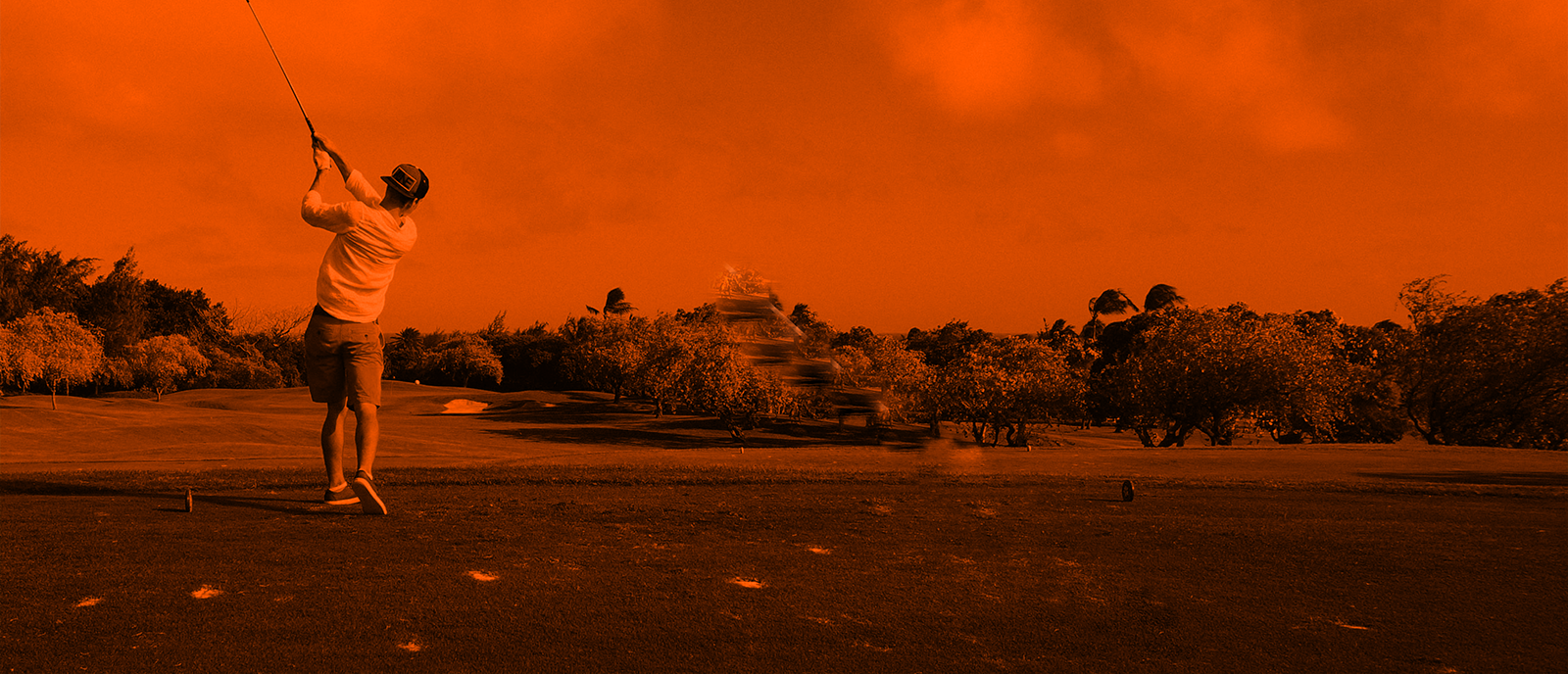Guided by the Principle of Parsimony (aka Occam’s Razor) we employ a root cause methodology called the Five Whys to discover the simplest and most obvious reason for the golf shank.
Why 1
Why does a golfer hit a shank?
Because they hit the ball with the hosel of the club.
While this may seem obvious, it is not understood by all golfers nor their teachers. Some golfers call any errant shot struck by a part of the club other than the face a “shank”. They treat the word “shank” in the same vein as “duff”, “skull” ,”toe”, “top”, “yip”, etc.; basically, an all-purpose word for a mistake. This is not at all true, and the misunderstanding of this causes serious challenges to diagnosing and correcting golf shanks. We also believe that the hosel may have been previously referred to as the “shank” of the club, due to the near universal definition of “shank” being that part of an object that essentially joins one critical part to another. It stands to reason that a ball hit off a part called the shank would be a “shanked” shot.
Why 2
Why does a golfer hit the ball with the hosel?
Because the hosel is across the target line at impact.
This might be the single most significant discovery in our mission to solve golf shanks. And yes, it is dead simple but understanding it is the key. The idea that the hosel can be across the target line at other times, for example in an over-the top move, and NOT cause a shank helps us to tighten the possible causes. Most diagnosis seem to focus on weight shifts, or swing path. But these theories fail simply because the condition claimed to cause a shank will not produce a shank each time. The condition of the hosel being across the target line at impact is in fact, the only repeatable condition that causes the shank, and leads us to more refined understanding of the correction.
Why 3
Why is the hosel across the target line at impact?
Because the golfer is standing too close to the ball relative to their current swing arc.
It’s both profoundly simple and mind-achingly complicated. Much has been written on how each of us has a unique golf swing, and while that may feel true, most of our swings are remarkably similar. Much bigger factors in producing ideal swing arc is the golfer’s height, club length, arm length. It is generally accepted that in order to produce consistency and power, we need to maximize that arc. Then the arc will be somewhat fixed, and the distance to the ball would then be derived. It isn’t a preference as much as a result. It’s true that golfers have flatter or more upright swing paths, but these are achieved through compensating variables, many quite succesfully. However, there is likely a zone of swing arc angle where the most consistency and power are achieved for each golfer, and within those close parameters, the distance a golfer stands from the ball is set. You have a unique distance for your swing, but when you shank, you are violating that ideal and are simply setup too closely.
Why 4
Why is the golfer too close to the ball?
Because the golfer has made a recent swing adjustment of some kind.
This is an area of speculation, but we’re willing to bet you will find that it resonates with over half the golfers who are presently shanking the ball. We have transcribed numerous stories of golfers who sought some sort of ball-striking improvement, and went to work on grooving this new technique. We’re also willing to guess that initially, they did see some success.This is very consistent in golfer’s stories of shanking. They have been playing well, and “suddenly” the shanks “came out of nowhere”.
Why 5
Why does a recent swing adjustment of some kind cause the golfer to setup closer?
Too much focus on executing the recent change is causing the golfer to involuntarily setup closer to the ball..
Because of their recent swing change, the golfer tends to over-focus on the mechanics of the downswing or impact zone. This obsessive concentration causes the golfer to incrementally and subtly move forward towards the ball in the setup, causing the impact spot to move in tiny increments from the center of the club impact towards the hosel. After all, we know that when humans need to concentrate, they tighten focus, bend forward, move closer. Eventually, the hosel contacts the ball and causes a shank. The golfer thinks incorrectly that the shank has “come out of nowhere” when in fact they have been moving towards the hosel for weeks.
How can it be that simple?
Rest assured that a simple explanation for a cause doesn't mean the solution will be as simple. Getting back to your ideal swing arc and proper setup without abandoning your recent swing improvements will take time and effort. But try the following quick solution and we believe you will see the logic in this almost immediately. This is a temporary fix.

